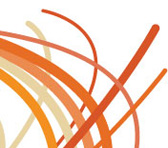15 August 2012
Survey: community orchestras playing Australian music

New research into Australia's community-based orchestras shows an area of Australian cultural life where all ages are represented and learn and play together; where new Australian music is nurtured and where the combined value to Australia in volunteer hours alone exceeds $10 million each year.
The research was undertaken by the Music Council of Australia's Music in Communities Network, and its manager Alex Masso. According to the research report, over half of Australia's community-based orchestras commission new music or have a member of the group compose for it. Australian music also ranks highly among genres that orchestras would like to play, if they aren't doing so already. While survey results indicate that 'classical music' is still the most popular genre, they also show that community-based orchestras perform a wide range of music from the survey's genre categories 'contemporary', 'multicultural', 'baroque', and 'Australian' music.
54 orchestras responded to the survey - interestingly, the report itself is not able to give a definitive answer to how many community orchestras there are in Australia. The Music Council of Australia estimates that there may be 130-170 community orchestras nationally, but not all of these could be identified for the survey.
The findings of this research will be discussed at the Community Orchestra Conference to be held at Sydney Conservatorium of Music in September. Topics for the conference include Australian music and repertoire choices for community orchestras, institutional support for community music groups, and a discussion about El Sistema, the extraordinary Venezuelan music education program and its Australian incarnations.
The full research report is available on the Music in Communities Network website.
Further links
Music in Communities Network (http://musicincommunities.org.au/)
© Australian Music Centre (2012) — Permission must be obtained from the AMC if you wish to reproduce this article either online or in print.
The Australian Music Centre connects people around the world to Australian composers and sound artists. By facilitating the performance, awareness and appreciation of music by these creative artists, it aims to increase their profile and the sustainability of their art form. Established in 1974, the AMC is now the leading provider of information, resources, materials and products relating to Australian new music.
Comments
Add your thoughts to other users' discussion of this article.
You must login to post a comment.
A Composer's Perspective on Community Orchestras
by Wendy Suiter on 1 September, 2012, 5:56pm
Community Orchestras provide an excellent opportunity for people to participate in making music, rather than just be audience. Not only does participation mean being part of a group and all the benefits that entails, it also helps to dispel the myth that music is magic beyond the reach of the ordinary person, and that composers are magicians rather than human. However, the decisions about the repertoire are not necessarily made by the members of the orchestra, but rather by committee or musical director. In my experience, the factors that influence these decisions are friendship networks and influences, required standard of playing and its development through repertoire, as well as potential interest to the audience, and its place in the programming for the year. If an Australian work fits these criteria then it will be selected in preference to music from other countries. I suggest that this is the only time that patriotism will influence music selection. Community orchestras like our professional orchestras have many agendas to fill, playing Australian music might not be so high on the list. I think community orchestras are a wonderful institution. Building equitable opportunities and transparent processes for collaboration between any interested local composers and local orchestras could provide benefits both ways in terms of exposure to new music for the musicians, and exposure to musicians for the composers.